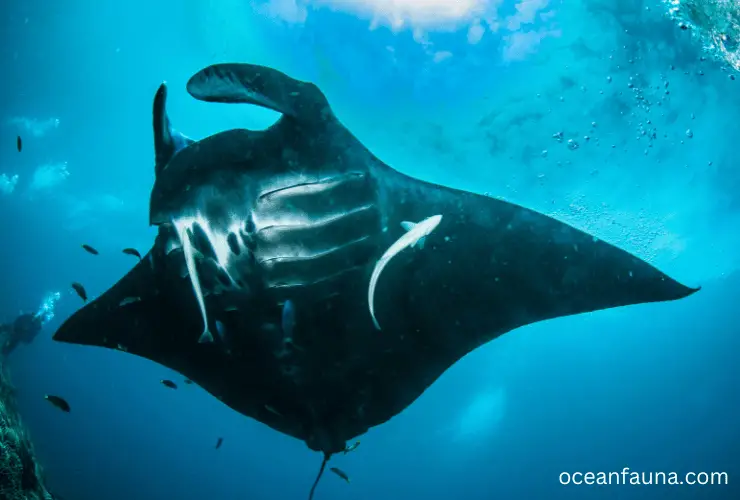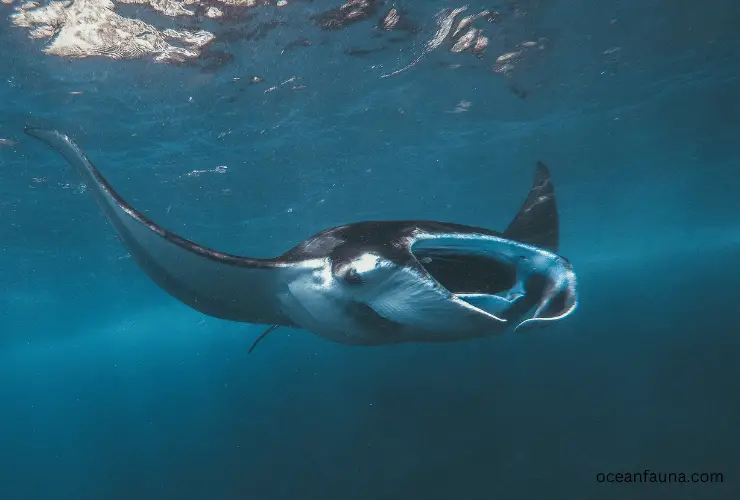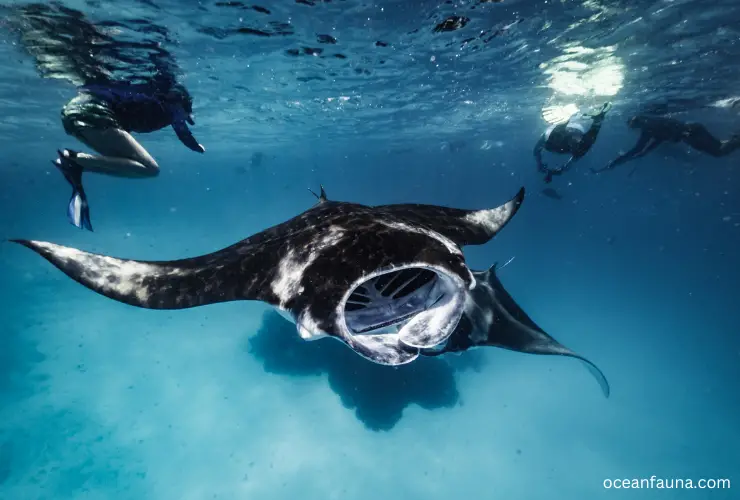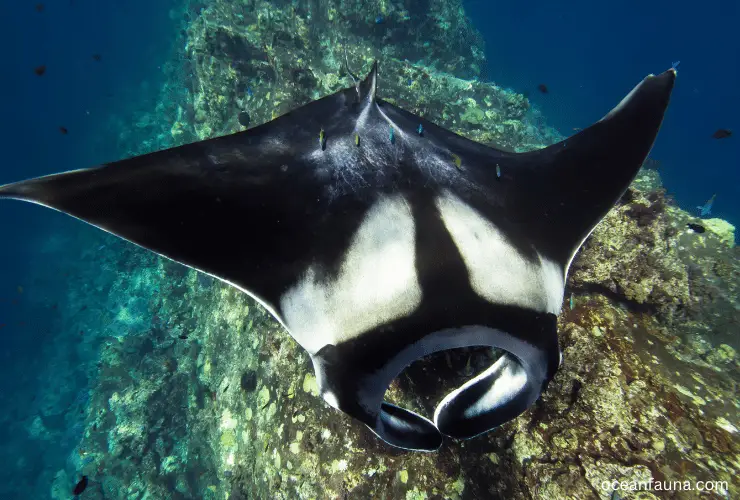Yes, manta rays have become endangered. They face the dawn of their reign in the ocean due to threatening human activities. Among the two alive species of manta rays, Mobula Birostris and Mobula Alfredi, the former has become part of the endangered species list. The wildlife authorities are taking steps to protect and preserve giant manta rays.
Manta rays are cartilaginous fish belonging to the taxonomic family of Myliobatidae (Eagle Rays). Wildlife conservationists and activists have taken action globally, acknowledging the urgency of their vulnerable situation.
In the following article, we will dig deep into the conservatory status of manta rays and the steps that are being taken to bring them back from the brink of extinction. The revival of the population of giant oceanic manta rays will restore the balance of life in the oceans.
Current Status of Manta Rays- Are They Endangered?
The species of manta raysare surely facing the danger of extinction. Currently, the giant Oceanic Manta Rays have been raised from the status of “Vulnerable” to “Endangered” by The International Union for the Conservation of Nature (IUCN).
At the same time, the Reef Manta Rays are labeled as “Vulnerable” on the Red List Of Threatened Species by IUCN. Therefore, the population of oceanic manta rays is being closely assessed along with other 16,000 endangered animal species.

As manta rays are migratory fish, their population is distributed all over the globe. In the assessment of 2003 for the determination of the conservatory status of manta rays, there needed to be more data found. But over the course of a few years, their conservation status slowly shifted from Near Threatened to Vulnerable and, as of recently, Endangered. The populations of manta rays are constantly declining due to various anthropogenic reasons.
It is an alarming situation for us, as with each passing day, nature and its wildlife suffer from grave dangers because of our activities. It will be a great loss if we lose nature’s another enigmatic marvel.
| Manta Rays Species | Scientific Name | Conservatory Status | Source |
| Oceanic Manta Rays | Mobula Birostris | Endangered | Red List |
| Reef Manta Rays | Mobula Alfredi | Vulnerable | Red List |
A Snapshot of Manta Rays Populations – How Many Manta Rays Left in The World?
Manta rays are migratory fish whose population is widely distributed across the world. However, the population of each region is declining at an exponential rate on account of extensive targeted trade and pollution.
The manta rays are counted based on photo identification. Every manta ray has a unique pattern of spots on its belly. These spots are distinctive for each individual and, thus, help in counting manta rays.
Scientists have identified the only thriving population of oceanic manta rays in Ecuador. About 22,000 giant manta ray individuals live in Ecuador’s coastal waters. It is the only known largest population of giant manta rays.
According to the researchers in Maldives, 5000-6000, manta rays are estimated to be found in the waters of Maldives. In Australia, only 1500 individuals have been identified in the eastern coastal areas.
Following is the table that shows the population size of manta rays in different regions of the world:
| Region | Population Size | Source |
| Ecuador | 22,000 | (Source) |
| Maldives | 5000-6000 | (Source) |
| Australia | 1500 | (Source) |
| Philippines | 2659 | (Source) |
Why Are Manta Rays Endangered?

A number of multifaceted reasons have been the cause of the endangered state of manta rays and the destruction of their habitats. All of these reasons can be directly or indirectly traced back to human activities. Following are the reasons that lead manta rays to the danger of extinction:
Commercial Fishing
Overfishing because of commercial purposes is the main reason for the drastic decline in the population of this species. Manta rays are objected to fishing for the trade of their gill rakers and fins.
The high demand for their gill plates has caused local fisheries to exploit their populations. They are also being targeted for their liver oil. Unfortunately, manta rays also become the victim of bycatch by getting caught in fishing nets and trawls.
Pollution
Ocean pollution plays another role in the decline of the manta ray population. A large number of manta rays die every year due to ingestion of plastic materials and other toxic substances. It is tragic that cruel human activities further harm a species already in danger of going extinct.
Slow Reproduction
Manta rays grow slowly and attain sexual maturity late in their life. They have an annual breeding pattern. Female manta rays experience a long gestation period. They give birth to the live pup after 12-14 months of gestation.
Manta rays only give birth to one baby. Thus, this slow reproduction rate and the delayed-growth rate do not contribute to recovering their population. Even if we eliminate all of the threatening factors, it will take years for manta rays to build back their population.
How Many Manta Rays Are Killed a Year?
Manta rays are subjected to illegal overfishing due to the ever-expanding demand for their body parts in the market. Fishermen catch manta rays and sell their gill rakers and wings in different marketplaces.
Sadly, more than five thousand manta rays are killed yearly for trading. Compared to the deaths caused by their natural predators, manta rays experience a higher rate of human-induced fatalities.
The number of manta rays killed every year can vary from year to year. A report from a wildlife trade group states that approximately 3500 manta rays are supposed to be killed each year due to overfishing. (Source)
But the number of rays killed yearly is much more than that. The unintentional catching of manta rays as a bycatch in fishing gear also contributes to the higher mortality rate of this species.
Following is the table of the estimated worth of trade involving manta rays: (Source)
| Trade | Total Gain |
| Gills rakers | 5-10 Million dollars per year |
| Living Manta Ray | 1 million Dollar for One Fish |
Consequences of Manta Rays Endangerment

Every species has its own role and impact on the surrounding nature. The contribution of each species in the ecosystem maintains the delicate balance of life. The extinction of any species destroys the balance of life.
The populations of manta rays are exhausting due to the consequences of fatal human activities. The consequences of their declining number are dangerous for marine ecosystems.
Manta rays are filter feeders. They control the plankton population by feeding on large quantities of them. Manta rays are also involved in the recycling of nutrients through different nutrient cycles.
The endangerment of manta rays has resulted in the disturbance of natural food chains and webs. The endangerment of manta rays has also threatened the sustenance of relative biodiversity.
Manta rays are responsible for attracting tourists and, thus, have the potential to support a significant portion of the economy. Manta rays play a vital role in sustaining ecosystems and the balance of marine life.
If manta rays become extinct, the marine ecosystem will face detrimental consequences. Therefore, we must ensure the safeguarding of manta rays.
Conservation Efforts – What is Being Done to Protect Manta Rays?
International organizations concerned with wildlife and its integrity have taken various actions regarding the conservation of manta rays. Oceanic manta rays were listed as “Vulnerable” on the Red List of Threatened Species by IUCN. Now, the IUCN has raised its status to “Endangered.” Under this evaluation by IUCN, fishing of manta rays is banned as fishing is the main threat to the sustenance of manta rays.
In 2011, manta rays became part of Appendix I and II of the Convention on Conservation of Migratory Species of WIld Animals (CMS). In 2013, manta rays were listed on the global treaty of the Convention on the International Trade in Endangered Species (CITES). These two global conservation treaties of manta rays have regulated all of the dealings regarding them.
The Endangered Species Act has also recognized manta rays as an endangered species. It is also guarding manta rays throughout their regions to protect them from extinction. In 2014, Indonesia also banned the trade in manta rays and their body parts to keep their population alive for the sake of tourism. All these conservation efforts are in action to protect manta rays.
FAQs
Q: How Rare Are Manta Rays?
A: Manta rays are not rare sea creatures. However, they have become endangered due to unjust fishing. Due to their endangerment, it has become a rare sight to spot manta rays in the oceans.
Q: How Old Is the Oldest Manta Ray In The World?
A: The oldest manta ray to know is named “Taurus.” Taurus is a 50-years old male manta ray. He is found in the waters of the Great Barrier Reef. He was first sighted and photographed in 1982.
Q: Is There Only One Pink Manta Ray in The World?
A: There is only one pink manta ray in the world. The pink manta ray is named Inspector Clouseau. Naturally, manta rays have black and white body color. Clouseau has gained pink color due to a genetic mutation.
Wrapping Up
Manta rays are a great wonder of the sea that has to be protected at all costs. Their peaceful population is threatened due to cruel human activities. Manta rays play a crucial role in maintaining different food webs in the ocean. If they get wiped from the face of the world, the balance of nature will be destroyed.
Because of this extinction threat, various conservation efforts have been made to protect manta rays.
Fishing manta rays for their gill rakers have been banned because there is no proof of its usage in Chinese medicine. Trading manta rays to keep in aquariums has also become highly regulated. These actions are the sole means to protect and preserve manta rays.

